Duran Lantink
Designer
Amsterdam
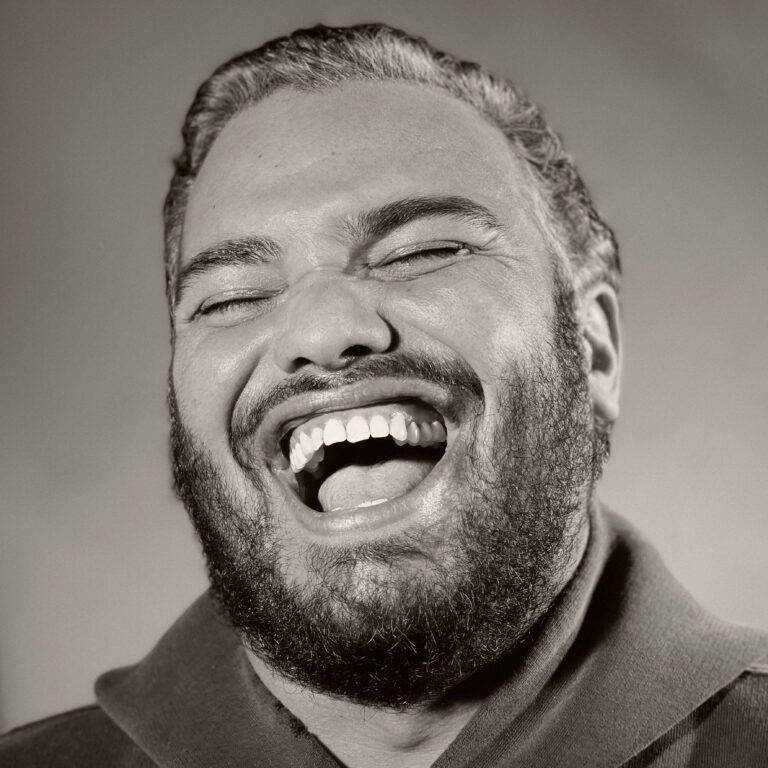
Working with the world’s foremost fashion retailers, Duran Lantink cuts up unsold designer gems from, say, Prada, Balmain or Balenciaga and patches them back together again, making entirely new garments for his fashion-hungry fans. The Dutch designer has made singer Janelle Monae’s most memorable pair of trousers and is now busy launching his own line of clothes, still made exclusively from pre-used fabrics. Despite his status as a reuse pioneer, Duran is still sceptical about certain conceptions of “greenness.” He’s more interested in the idea of ever-growing love and generosity. Whether through the clothes he makes or the community workshops he hosts at his studio, his work is all about circularity, giving back and doing more.
From Fantastic Man n° 33 — 2021
Text by GERT JONKERS
Photography by PAUL KOOIKER
Styling by DURAN LANTINK

The studio of Duran Lantink is on the west side of Amsterdam, at the edge of leafy Westerpark, in a scrappy office block that’s up for either demolition or renovation. For the time being, the 33-year-old designer is making use of a giant open space on the first floor. He uses the fire escape as his guest entrance. Sometimes Duran is there alone; sometimes there’s a handful of interns, assistants and seamstresses quietly minding their own business. Often, the floor is scattered with clothes, parts of clothes, scraps, belts, cuffs, collars, sleeves, snippets of fur and leather quite neatly laid out. “So that we know what’s there,” says Duran, who turns unsold designer fashions, damaged clothes and heaps of offcuts into new dazzling pieces that find their way back into the market for a price not unlike, if not higher than, the original retail price. He’ll mash up Balenciaga, Sacai and Y/Project into one fun dress, or fuse a Prada skirt with a Raf Simons-era Calvin Klein fireman’s coat, with bits of velvet from Off-White and half a puffer from the Moncler and 1017 ALYX 9SM collaboration. Given his steady output and constant spree of collaborations I assume Duran is a busy man, but he never comes across as such in my various meetings with him. While he’s not a particularly fitness-y kind of person, for some reason he’s often just returned from tennis, or is heading out to play padel, or is going to start seeing a personal trainer tomorrow. “I can’t even do a sit up, so it’ll be a challenge. I quite fancy the idea of a man shouting orders at me. Last week I tried swimming and hated it.”
GERT — How old are you?
DURAN — I’m 33.
Will you still be 33 when this issue comes out?
Yes, I’m Sagittarius. Born in December.
Are you open to astrology and stuff?
I am. I grew up around tarot cards and I-Ching stones. I went to see a shaman two years ago and she cleansed me from a lot of black magic – apparently my dad’s ancestors were into black magic. So, yeah. I never, ever cry, but at the shaman I sobbed like a baby for four and a half hours – her waving her hands, and me going “whaaa-haaa-haaa-whaaa-haaa” and getting the most bizarre visions. So, yes, I think I’m receptive to that kind of stuff.
Would you call yourself a designer, or an artist? What’s on your business card?
Fashion designer. I don’t mind being called a stylist or an artist either – I quite like it all. But my starting point is something that involves clothes and fashion, so, yes, fashion designer sounds fine to me.
As a child, did you have a designer as your role model?
Yes. Walter van Beirendonck. Obsessively! As a 12-year-old I was obsessed by his mascot, Puk Puk. I had Puk Puk pens, a Puk Puk backpack, a W< ‘Kiss The Future, Fuck The Past’ T-shirt that I got from my aunt. My world revolved around Walter. When I was eleven I dyed my hair shocking pink, dreaming to be asked to walk in Walter’s show. Isn’t that weird? He was my everything.
It’s cute. Where was this?
I grew up in The Hague.
Did you ever end up meeting Walter?
Yes, he came to judge my master’s project at the Sandberg Institute. He asked me why I’d never applied for the course in Antwerp. I told him I did, but got rejected. Ha! Still, it’s nice he asked me. Very friendly man. I didn’t dare to tell him I used to be obsessed by him. I still have the Puk Puk shirt and this nylon ‘Is Evil Really Evil?’ shirt with a pink poodle on it.
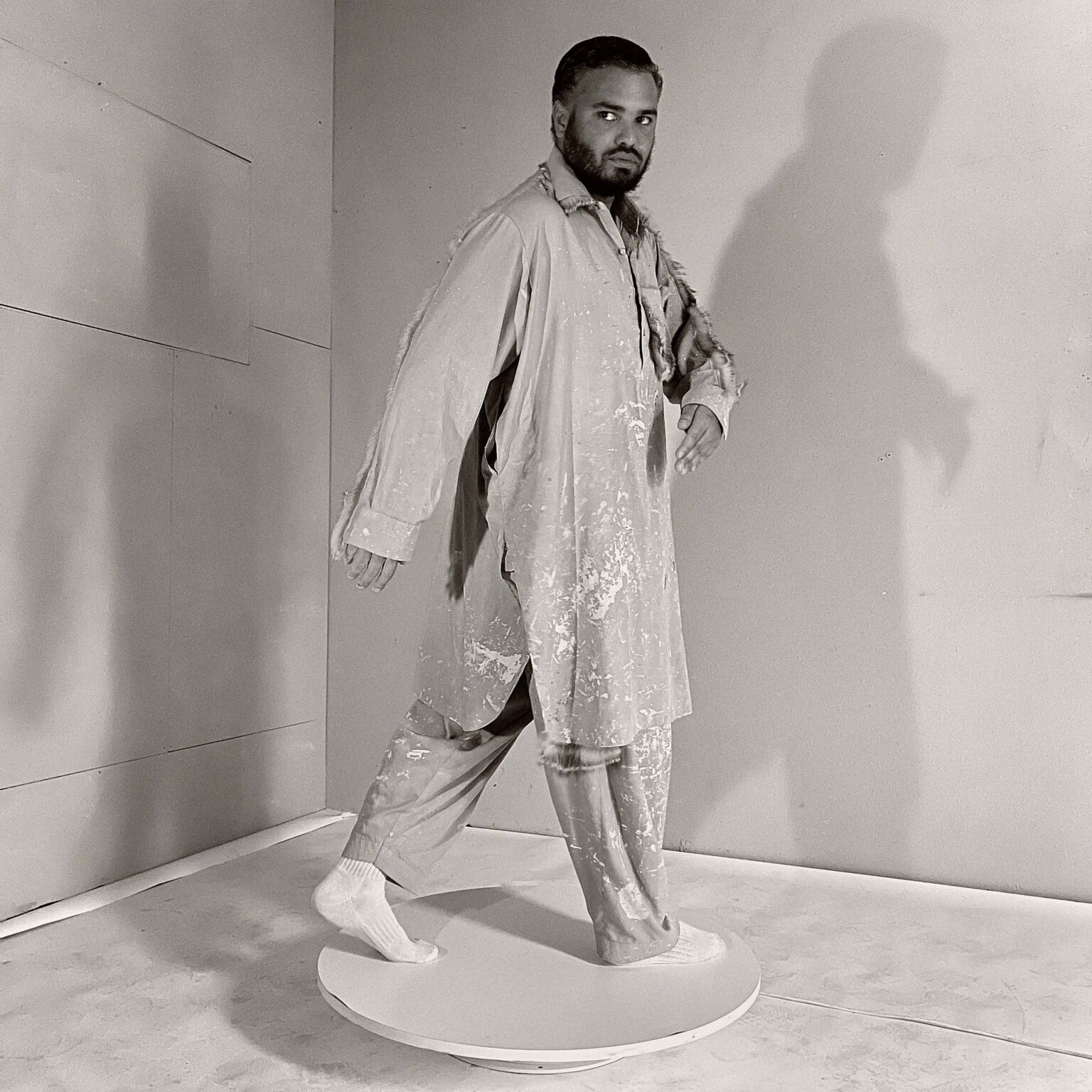
Do you keep a lot of clothes?
Not really. Just the Walter stuff, which I still wear 20 years later. Most of my clothes end up being cut up to be used for something new. I had a nice Acne Studios pea coat that my colleagues hid from me once I’d mentioned that I was going to cut it up. Which indeed I did when I found it again. It’s a bit of an oddity of mine to look at something new that I want to buy and think, “How can I eventually turn this into something else?”
And if you don’t have an idea of how to cut it up and reuse it?
Then I’m not interested.
Did you know from a young age that you wanted to work in fashion?
Oh yes. I wanted to be head designer at Chanel for as long as I can remember. And in fact, I held my first fashion show when I was 15, on the beach in Scheveningen. I’d taken my stepfather’s pile of discarded Diesel jeans, took the waistbands, and my grandmother’s tablecloths, and combined them into short skirts. I’d borrowed a bunch of Dolce & Gabbana studded pumps at this shop, De Rode Loper, in The Hague. It looked great! A huge success! I was ecstatic, of course, what a triumph! My friend and I partied on to the North Sea Jazz Festival that evening, and we ended up in Chaka Khan’s hotel room, smoking hash from a pair of scissors.
What happened to the collection of assembled skirts?
This cyberdog-rave-techno shop in Scheveningen picked them up and they sold out in a second. Which turned me into an arrogant prick, of course, and a bit of a problem child.
Duran went to a high school for teenage art talents, and then moved to Amsterdam – first to attend the quite scholarly fashion school AMFI and from there on to the more radical Gerrit Rietveld Academy, where he graduated in 2013. He did his master’s at the esteemed Sandberg Institute in Amsterdam in 2017. The ideas already present at his debut on the beach when he was 15 – upcycling whatever he found lying around – continued to define his later work. “I really struggled in my first year of college, where I had to make clothes from scratch out of toile. It was exactly what I didn’t want to do. I was already making my own wardrobe by cutting up and stitching up clothes. One day my teacher told me, ‘What you’re wearing, that’s what people want.’ I didn’t like drawing patterns anyway. I wanted to combine clothes.”
Did anybody use the term “upcycling” for this?
That’s interesting. I remember my teachers saying, “Do it, but don’t talk about it. People will just think you’re lazy or you’re a bad designer.” But later, during my master’s, they wanted me to emphasise the upcycling nature of what I was doing.
What do you prefer? To call it upcycling or not?
Not if it’s just to tick some environmentally savvy box. I’m not really a warrior for recycling. It’s just the way I prefer to work and how I can tell my story. It’s not a pledge for reuse. I want to make something that’s attractive and beautiful, not something that makes you feel good because you’re doing good. Talking about the “greenness” of the work is so dull. I mean: I eat meat, I smoke, I take taxis, I take flights, I order food that’s being delivered in plastic by someone on a motorbike. I can’t claim I am constantly thinking about the environment. But I do think that there’s enough clothes already, and that I don’t need to make new things in order to make new fashion.
Ironically, his international breakthrough happened with a brand-new garment. In 2018, a friend, film director Emma Westenberg, asked Duran to make an outfit for singer Janelle Monae’s videoclip for her song ‘Pynk’. “I had five days to deliver the look, and the sketches they’d sent me of some scarfs flying around to look like a sort of vulva reminded me in nothing of the work I do, so I said no,” says Duran. “But Emma told me to just shut up and get to work.” So Duran hired six friends and an emergency work space, and churned out those spectacular “vagina pants” as seen in Monae’s video. (Google it.) “The woman at the fabric store was grossed out with me showing up with pictures of vaginas to find the right fabric. But, I mean, sorry, what could I know? I’ve not come across many vaginas in my life.” The trousers form the highlight of an already fabulous video to a fantastic song, and iterations of the garment have since been sold to several museums around the world. Duran is a bit hesitant to talk about them, and indeed, they’re not really a typical example of the work he does.
At one of our meetings, Duran shows me a dress from his 2013 Rietveld graduation collection. Attached to a large black see-through voile shape are parts of a vintage tuxedo jacket. He asks one of his interns to try it on, and what looks a bit shapeless on a hanger is indeed a wonderful piece when worn. It’s a good and simple idea with elegant results.
With its dropped ceiling, dated tube lights and naff carpet, the studio is remarkably unappealing. It’s unclear when Duran will need to move out, so he won’t do much about the decor. But it’s still a nice treasure trove to wander around in. There’s fascinating bits of design everywhere. Two fake patent leather Prada bags are stitched together and covered in wind-up chattering teeth. It’s the fruit of a project he and his friend Jan Hoek did with a group of homeless sex workers in Cape Town, South Africa. There are interesting shoe combinations everywhere. There’s a pair of transparent epoxy Miu Miu wedges decked out with a Nike Air Max sole that were ordered for Kylie Jenner.
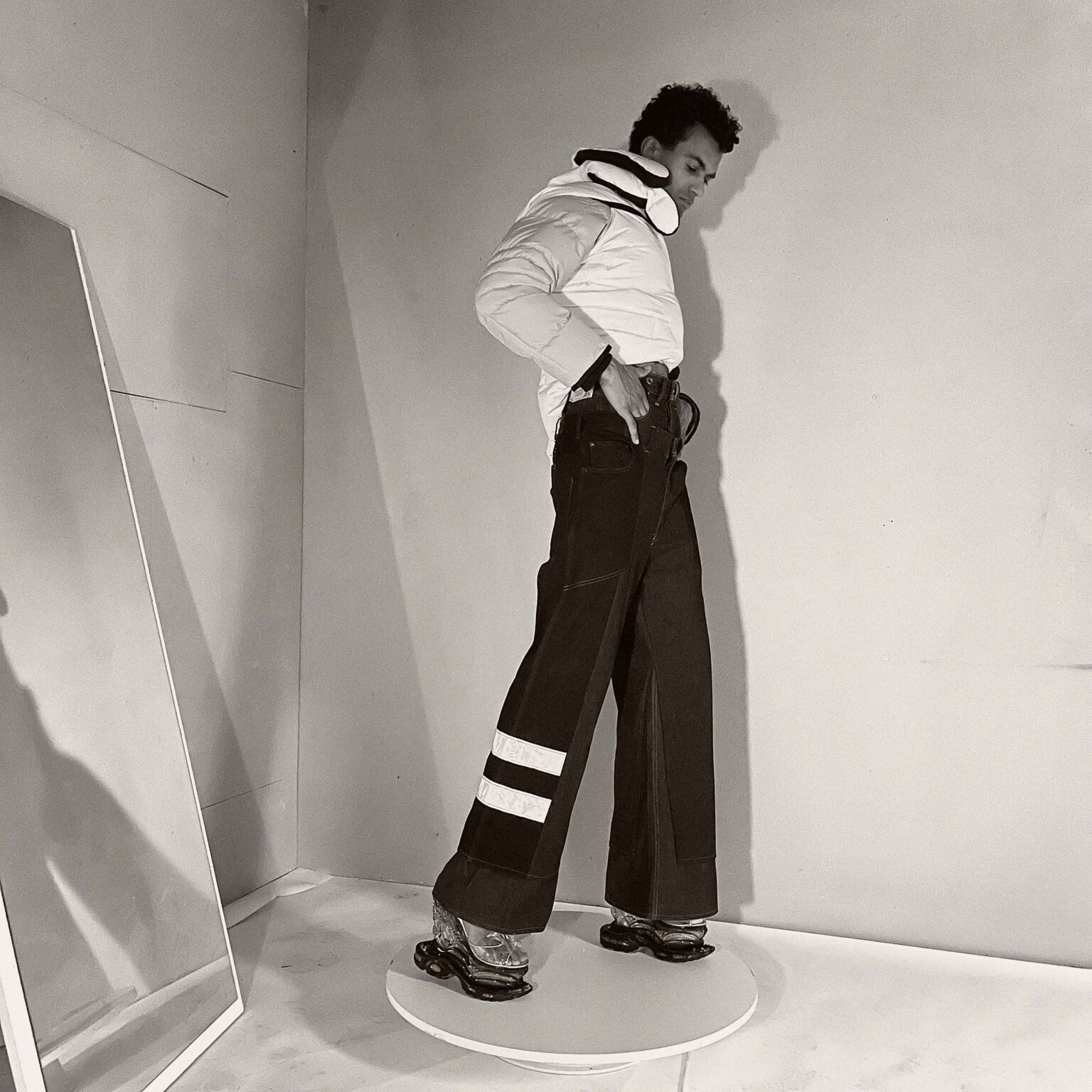

Do you ever sketch your designs on paper?
Never. I enjoy looking at piles of clothes and trying to solve the puzzle in my head, what to make of it. Trying to see if I can build on something, making something new. If you give me a blank piece of paper, you’ll get doodles, figurines, hearts, lightning bolts. I prefer working on a computer, compiling, designing in Illustrator and Photoshop. I don’t think or work like a traditional designer, thinking: “This season, let’s do flowers.” I need to work with what I have available, and figure out how to turn it into something new.
Can you work with whatever is available?
I think so, yes.
So if Lacoste delivered a truckful of 8,000 polo shirts for you to have a go at, you could do it?
I’d get depressed. But yes, I could do it.
Can you give me an example of how you play, or struggle, with a certain garment to turn it into something new?
Joyce, the store in Hong Kong, gave me this yellow Chenpeng scarf in the shape of an XXL glove that was so amazing. It happens sometimes, where I think, “Why would I change this? It’s perfect as it is.” So it hung in my studio for a long time, and whatever I tried doing with it didn’t work. Until, one day, it worked! I wrapped it around the body, with a Lee denim base and orange sleeves from a ski jacket from a brand called Wellensteyn. This way, it was worth using the scarf and didn’t degrade it.
It’s interesting that it looks like an ode to Walter.
It does!
Retailers the world over approach Duran to turn their unsold items into new standout pieces: Joyce, LECLAIREUR, Browns, H.Lorenzo, Kiki Niesten. Once the clothes have been Duran-ified, they get a new lease on life on the fashion market. Two years ago, Saudi Arabian Princess Jawaher asked Duran to have fun with her couture wardrobe, so he flew to Jeddah. As it turned out, the choice of pieces he had to play with was very limited. But then Duran spotted some Pakistani builders wearing their worn-in kameezes (long work tunics), so he bought those off the builders and combined them with the princess’s couture furs. After the initial shock, the princess quite liked the outcome. As a follow-up, Duran is now fantasising about making workwear from deadstock fabric for the builders to use. Once they’re done with it, he plans to collect everything and sell it to fancy Western customers, giving the builders a generous cut. “I have a problem with ruin-in-reverse,” he says, “where new clothes are destroyed for that worn-in look. But I love worn-in clothes, especially if they’re really worn before they’re sold to people who are happy to pay good money for them. It’s like the opposite of Europe selling its second-hand clothes to Africa.” He was going to pursue the project with London department store Liberty, but, as with all things fun and exciting, Covid has halted the plan for now.
The concept with the Pakistani builders is a good example of the many community initiatives Duran is involved in, often in collaboration with his friend, artist Jan Hoek. Every Monday morning, Duran’s studio hosts a group dance with LeBelle, an Amsterdam-based theatre group for people with learning difficulties. They’re currently working on an exhibition of outsider art, a fashion collection called OutsiderWear, and a “superhero movie” with one of the group’s members, Fran, who is a bowling champion and judo expert. Somehow, the project also involves Belgian electro-rap group Chooler Division, whose two MCs have Down syndrome. “They’re really incredible.”
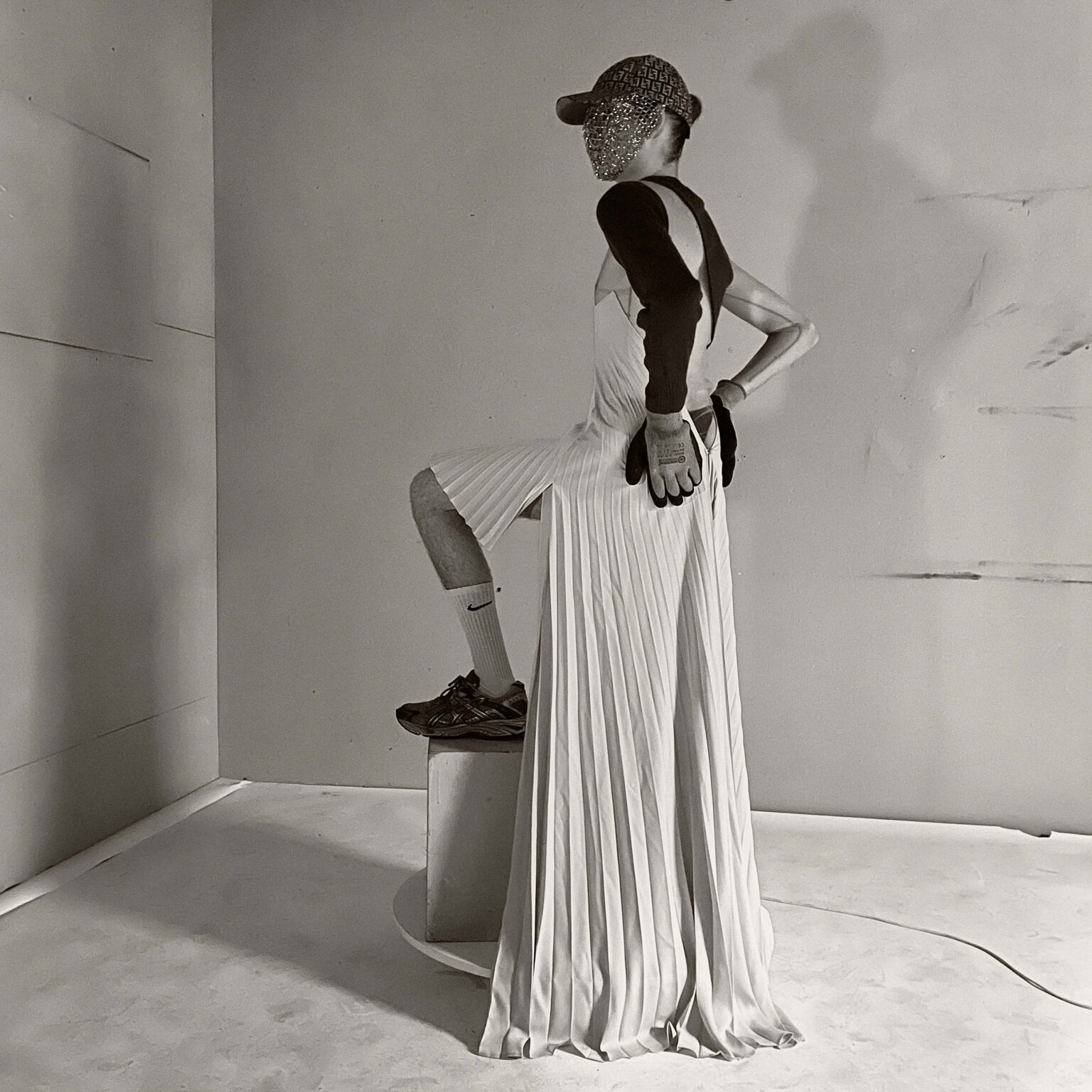
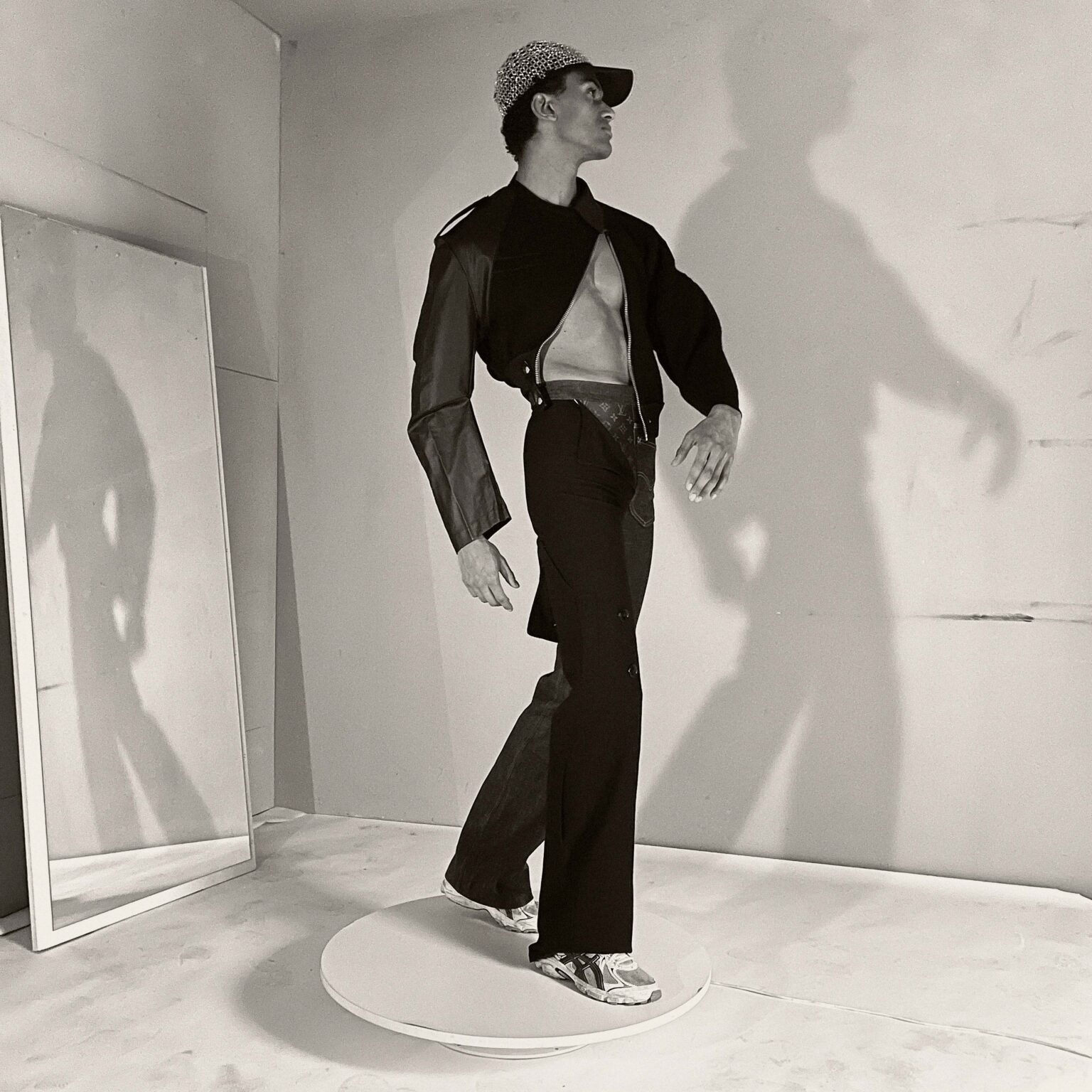
Did your parents name you after Duran Duran, the pop group?
Many people ask me that, but no, my dad chose to name me after Roberto Durán. [Duran googles his picture and shows it to me.]
Oh, who is she?
Roberto Durán is a Panamanian boxing legend. Can you imagine, me named after a boxer? Ha! My father passed away when I was six months old, so I don’t have any recollection of him.
Do you have any brothers and sisters?
I don’t, I’m an only child. Which is why I think I’m happy being on my own. I grew up in my own dreamscape.
What are your dreams like now?
I feel like I don’t have time to dream. I’m just too busy doing what I do. I wake up, I go to work, I go home, I go to sleep.
Okay, but you’re full of fantasies and ambitions. Would you ever want to design for a big house?
Oh yes, my dream job is to make a second line for Chanel or Hermès, where I work with all their scraps and leftovers. I like the idea of working for a family brand like theirs.
What if you’d be asked for a more traditional creative director’s role of making brand new collections, at, say, Dior?
I don’t know. Maybe I’d make one new collection, and then, in subsequent seasons, keep recycling that very first collection – until everybody, including me, is sick of it!
At our third meeting, Duran introduces me to Matthijs Theben Terville, who has just joined his team to look after the business – the branching out of the Duran Lantink brand. And indeed, a big part of my four conversations with Duran is about a collection he is planning to present in early 2021. At first he hoped to be ready for Paris Fashion Week in March, but currently he’s aiming for April. He considers it his very first stand-alone “collection” – not a body of work he’s made at a retailer’s request and that needs to be shipped back to return to the market, but a bonafide original Duran Lantink collection. The idea stems from the fact that Duran is super keen to do a catwalk show. “I’ve always had ideas for shows. I must have dreamed up a million shows by now, so I finally thought, ‘Fuck it, let’s do it.’ I am dying to tell my story in the form of a catwalk show.” He has secured a nice venue: Soestdijk Palace, the former residence of Juliana, Queen of the Netherlands, from 1948 to 1980. It’s a legendary but now somewhat derelict structure that could do with a good upcycling itself – it’s stood empty since Juliana’s widower, the notorious Prince Bernhard, passed away 17 years ago. Allegedly, it’s infested with mice.
Duran has Honey Dijon confirmed for the show’s soundtrack. It’ll be a filmed event, though obviously with no audience. There’ll be drones involved and he’s talking to big-shot sponsors. Fashion-wise, there is a brand-new collection, partly made of discarded designer clothes, partly from a haul from a giant army surplus store he discovered somewhere outside of Amsterdam, and partly using some very shiny gold and silver fabrics that were heading for a landfill because of a production error. He calls it a menswear collection, even though it has a lot of dress-like shapes in it.
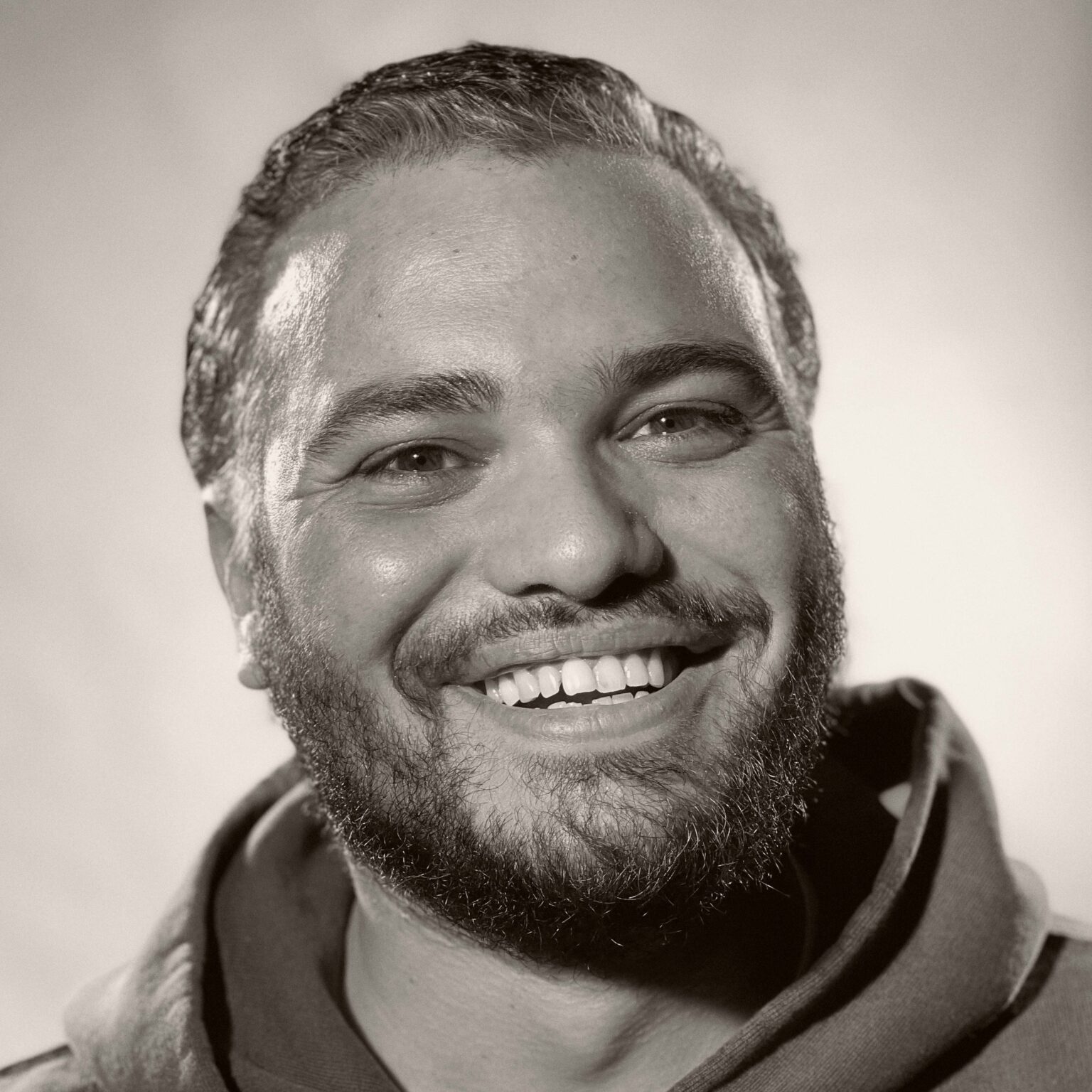
Does this project feel like a next step?
It does, in a way. It’s the first time I’m not collaborating with a “source” in the form of a retailer sending me clothes. And I feel like I’m stepping on a traditional show stage that up until now I’ve just been rebelling against. But I enjoy it. It’s fun to embark on an experiment. If it’s great, great! And if it’s a flop, so be it.
How will you make the collection commercially available?
That’s what we’re still trying to figure out. There’s more and more access to deadstock materials, so from a material point of view I think what we’ll make will be scalable. But every piece will be unique. Maybe every garment will have a QR code in it and be documented on our website. And if somebody buys it and gets fed up with it after a while, they should be able to send it back to us and we’ll remake it into something new. My dream is to turn myself into an AI, to train a computer to learn my design tricks so that it’ll be possible to design and combine lots of garments in a minute instead of me working on it for days. It’s a bit utopian, but it should be feasible.
What’s the part that you’re most unsure about in presenting your own line?
I feel like it’s imprinted onto my brain that, at the start of my career, I vowed to never make anything new because there’s enough stuff on this planet to upcycle and recycle. That’s the devil’s voice I hear. Could I allow myself to make a small, ecologically sane, biodegradable, naturally dyed collection that I promise to upcycle if people send back the garments? That’s the puzzle I’m trying to solve.
It’s great to stick to your initial principles but find a way that doesn’t make work impossible for yourself.
Yes. As I said before, I never really wanted to put myself forward as a poster child for a “green wave” in fashion. If I hear that, I see visions of extremely dull colours and boring people. It’s just not a very sexy story.
Why don’t you make it sexy?
I’ll tell you what. We’re making thongs for this upcoming show. It’s literally a second-hand idea, of course – they’re like Tom Ford’s thongs for Gucci, but with my name on it. Don’t they say that sex sells? We’re using deadstock Swarovski crystals on a nylon base made from recycled plastic bottles. I think they’ll be great. Perfect for, say, Cardi B.
Photographic assistance by Liv Liberg and Justin Antonius. Grooming by Kathinka Gernant.